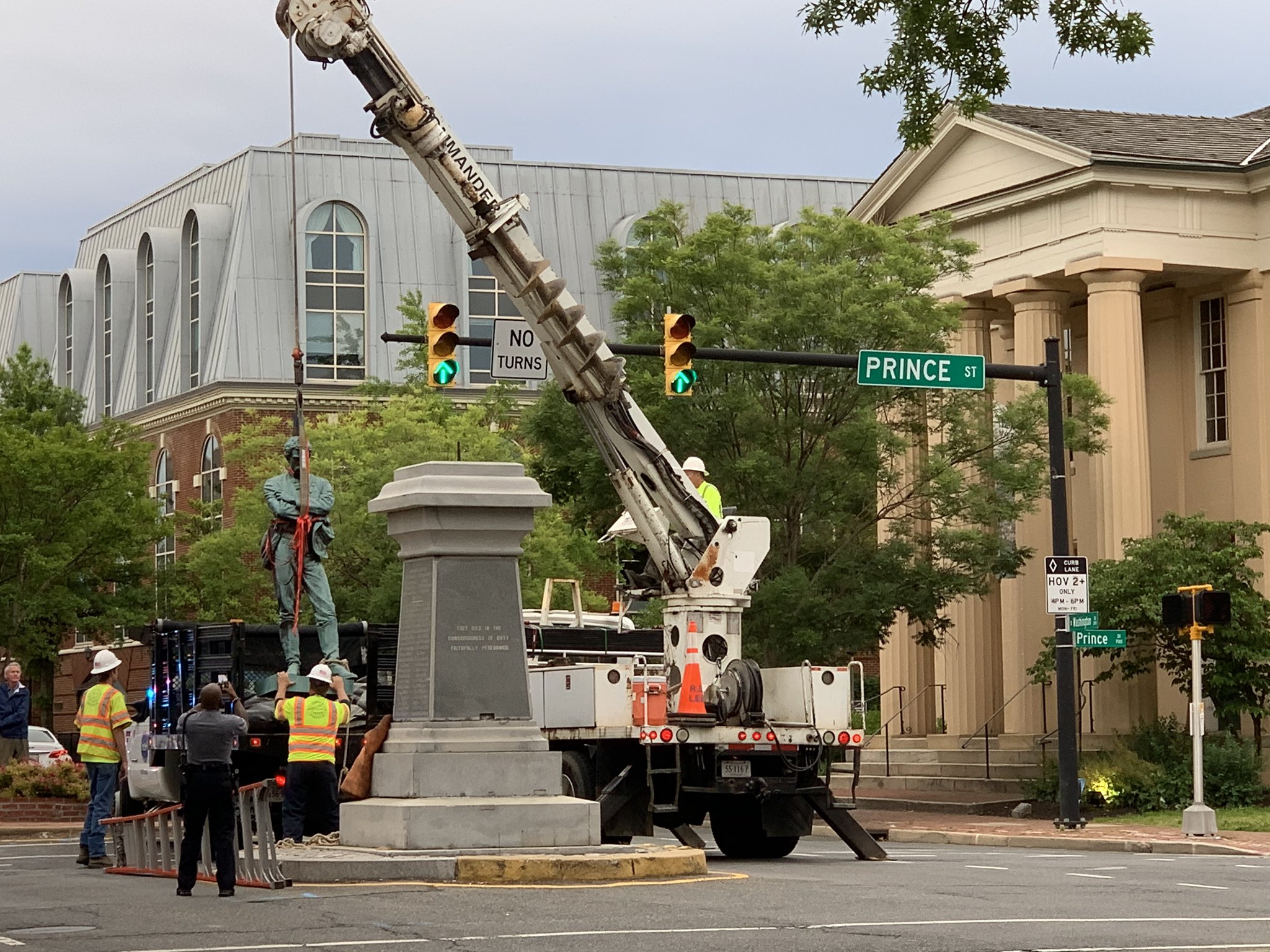Alexandria’s landmark statue of a Confederate soldier was removed from Old Town Tuesday morning. Its owner, the United Daughters of the Confederacy, informed the city of Alexandria’s government that the statue would be removed on Monday, city spokesperson Craig Fifer tells Washingtonian. “While we provided traffic control,” Fifer says, “the City is not involved in or aware of the destination.” Alexandria Mayor Justin Wilson announced the removal on Twitter Tuesday. The statue’s pillar will be removed later, Wilson says, and there’s no decision yet on how the city will use the intersection.
Alexandria, like all great cities, is constantly changing and evolving. pic.twitter.com/CZTjlOkpfT
— Justin Wilson (@justindotnet) June 2, 2020
The Caspar Buberl statue, called Appomattox, has stood at the intersection of South Washington and Prince Streets since 1889, a location chosen because it was where many Confederate soldiers gathered to leave for war. The city, which stopped flying Confederate flags five years ago, has since hoped to get rid of the monument to its Confederate past, a task complicated by a Virginia law that protected it. Governor Ralph Northam signed a law this April that allows cities to remove Confederate monuments. It will go into effect July 1. Alexandria renamed its portion of Route 1, formerly called Jefferson Davis Highway, last year.
Wilson tells Washingtonian the city had been in discussions for some time with the United Daughters of the Confederacy about removing the statue and that the organization decided Monday to accelerate the process. He says one of the city’s goals was to “ensure there was no drama about it. We did not want to see a repeat of Charlottesville or anything else.” Charlottesville’s city council voted in 2017 to remove a statue of Robert E. Lee, a decision that spurred lawsuits and eventually drew the attention of racists nationwide who descended on the city for a rally. Three people died in the violence that ensued.
The United Daughters of the Confederacy did not immediately return a request for comment. The organization’s headquarters in Richmond burned Saturday amid unrest over the killing of George Floyd, and protests have damaged some of Richmond’s many other Confederate statues. Alexandria’s statue has been struck by cars at least twice, in 1988 and again last year.
Wilson says the statue’s removal is part of the city’s ambition to broaden the story it tells about its past, which he says, “hasn’t been about tearing things down.” Among those efforts are the memorial park at the once-lost Contrabands and Freedmen Memorial Cemetery, the city’s purchase of the Freedom House museum this year, and its participation in the Equal Justice Initiative, which will honor the city’s victims of lynching. “For a lot of our residents, they viewed this statue as a symbol of the subjugation of a significant portion of our population,” Wilson says. “This is another marker of a long series of us turning the page.”



















